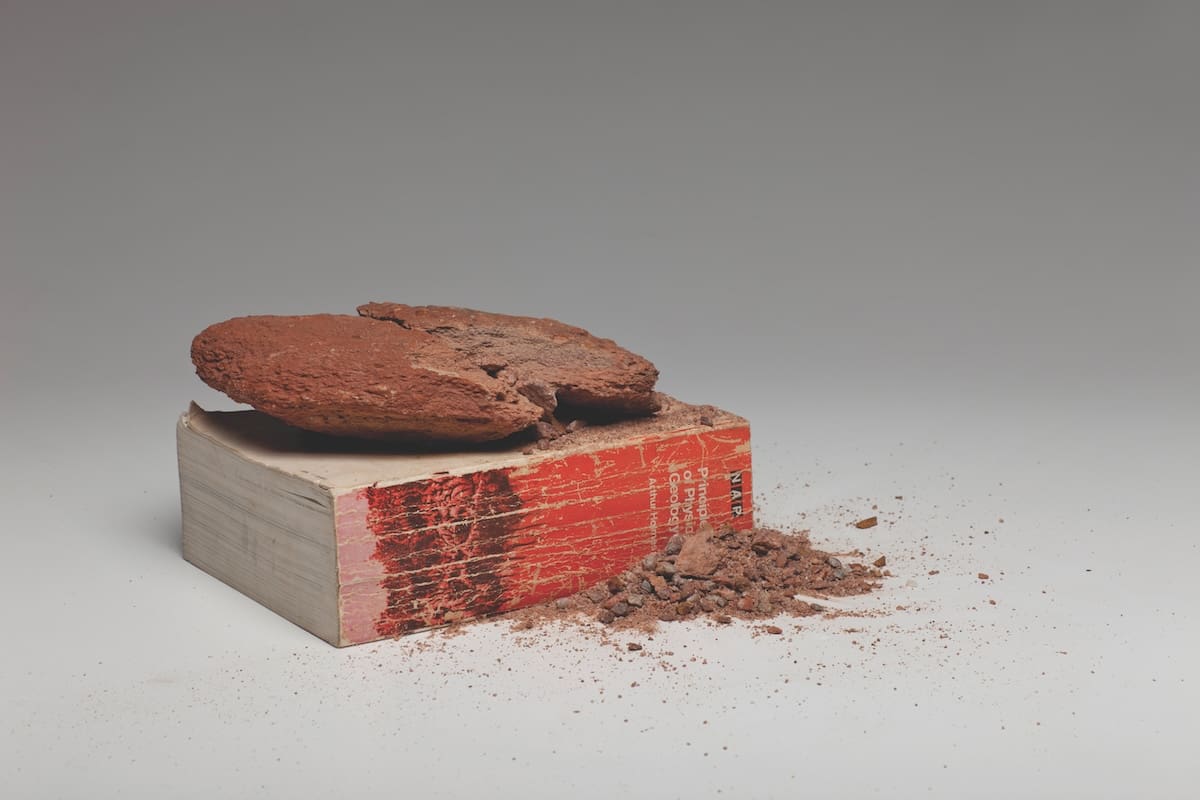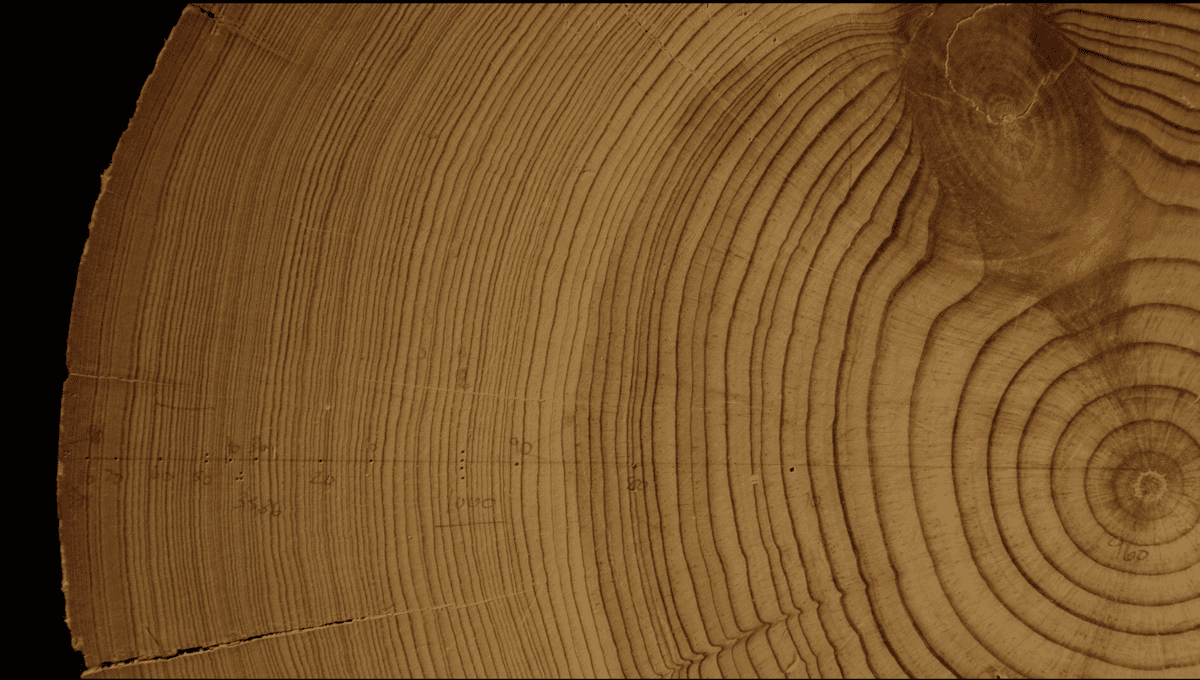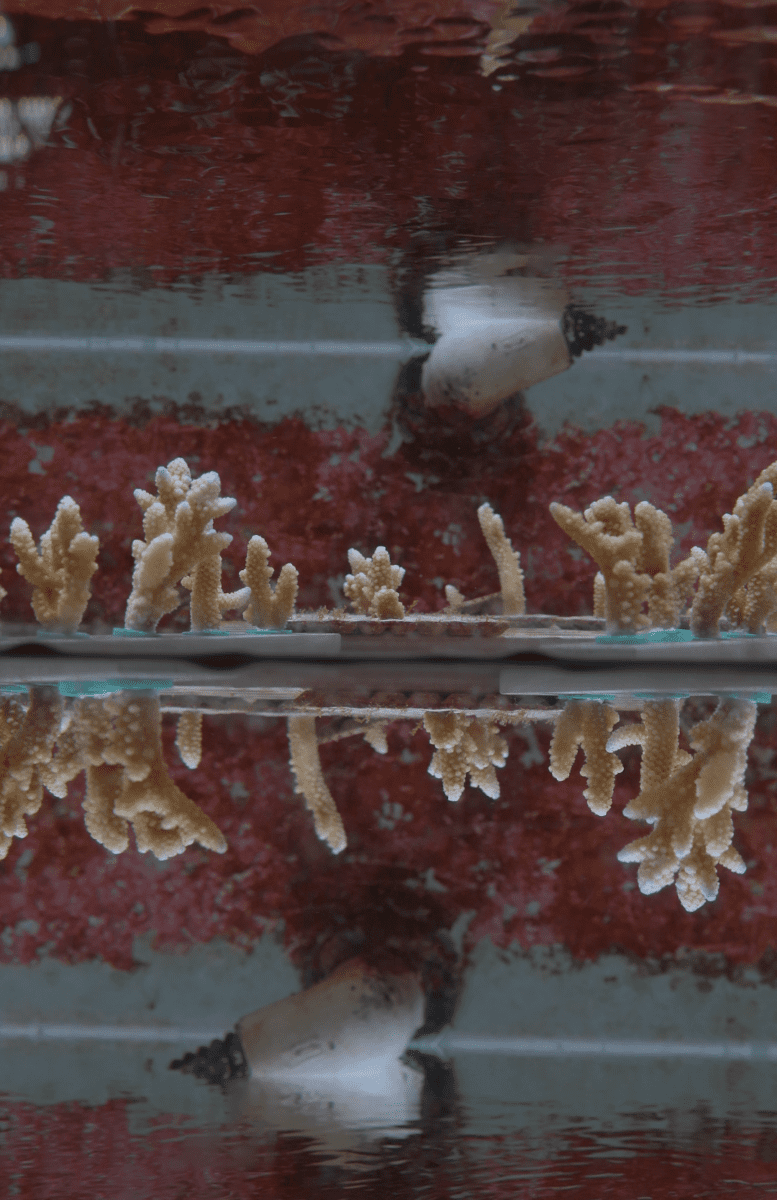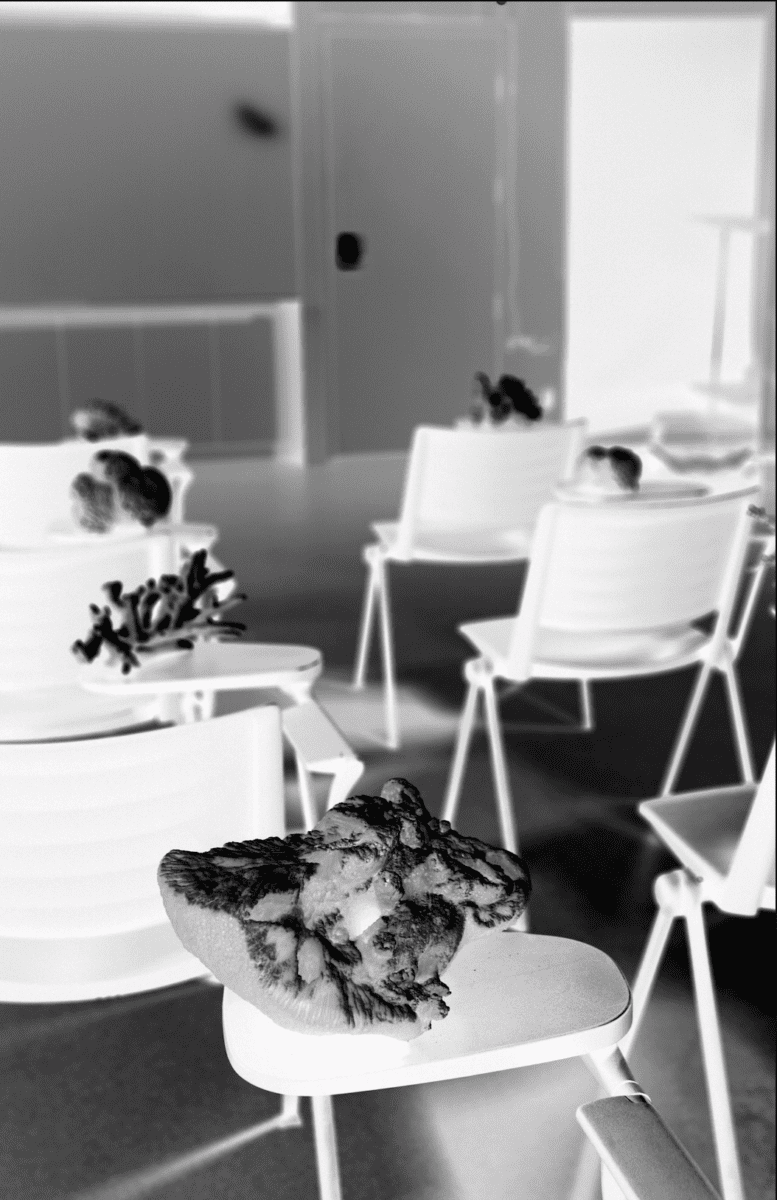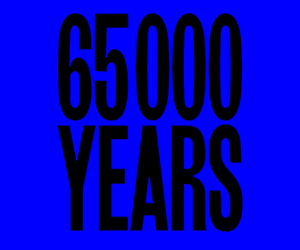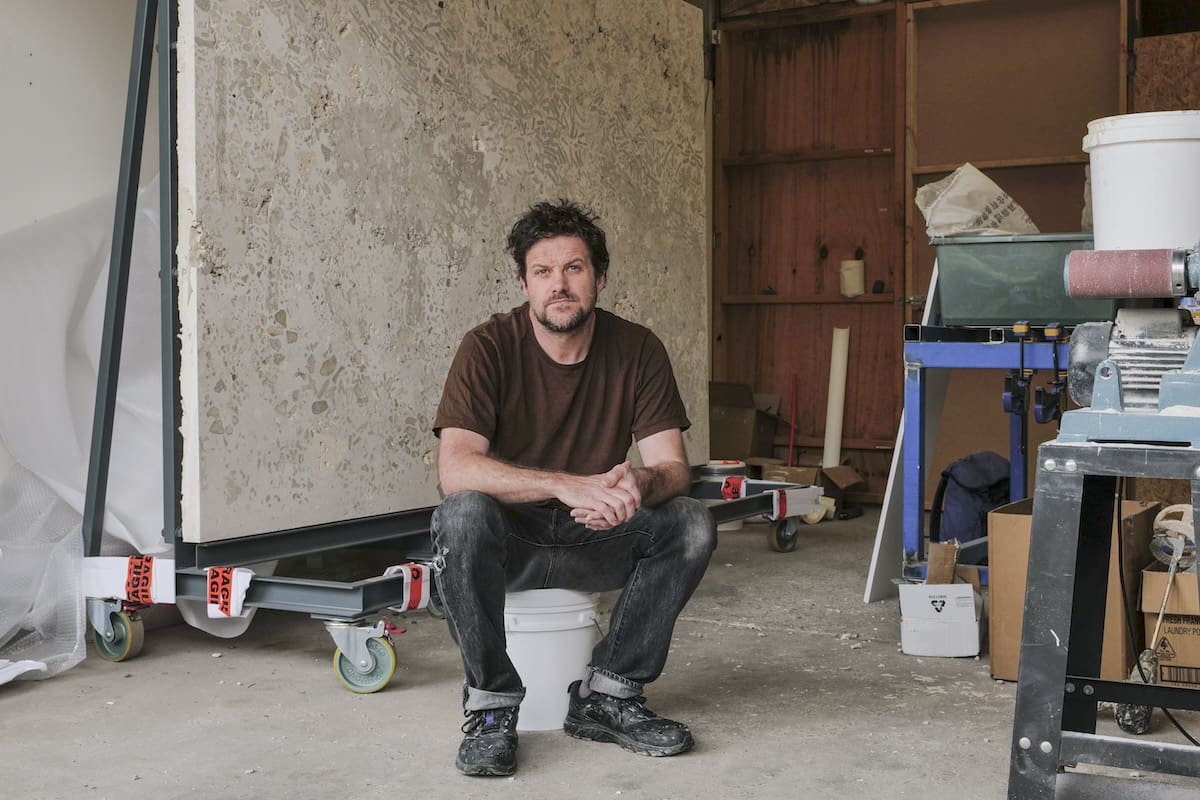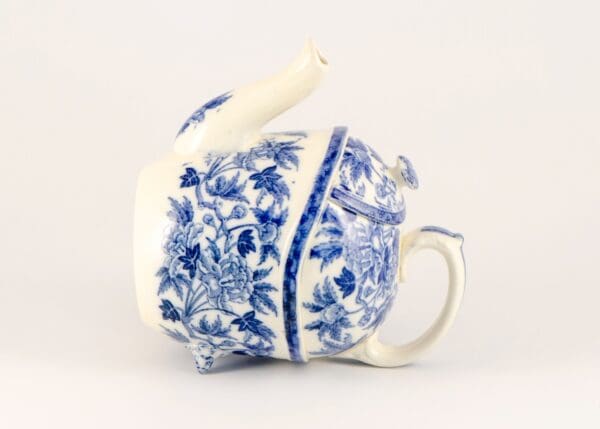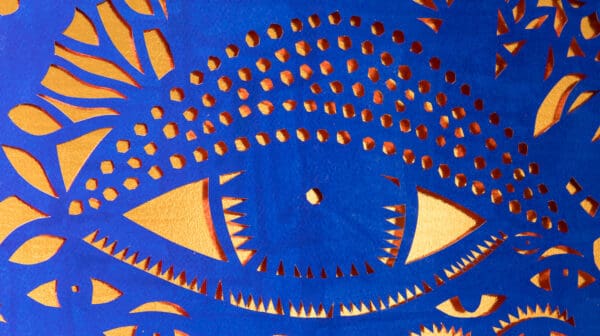To make his 2012 video-artwork A World Undone, which is the earliest work in Nicholas Mangan’s mid-career survey at the Museum of Contemporary Art (MCA), the artist needed a really high-speed camera. The video shows fine rock particles (dust, really) falling in high-definition, so that every crag and every cranny is on display. The only suitable camera Mangan could find in Melbourne was a rig set up to film car crash tests. To capture the footage of red rocks floating serenely down the screen—each fleck of dust appearing as big as an asteroid—Mangan had to film at the exact point of impact where the car hits the wall.
A violent action is hidden behind many of the materials Mangan chooses for his art, but this work actually has nothing to do with car crashes. A World Undone depicts the red dust of crushed zircon crystals, which happen to be “the oldest terrestrial material known to exist on Earth”. This truly ancient rock, formed as the first bit of land that crusted over the Earth’s molten core, is the ancestor of everything solid in our world. As each piece of zircon falls down the screen, we are invited to examine the first ever rocks. They were discovered in Western Australia, on Watjarri Yamatji Country, but being formed an unimaginable 4.4 billion years ago, these crystals are older than time.
To film his work, Mangan had to pulverise the zircon. The artist described making A World Undone as “a micro-scale experiment in undoing the world— literally, by crushing and dispersing the zircon”. The subject of the work then becomes the speeding up of time as humans appear, evolving first as an expression of their environment, before transforming land into a symbol of prosperity, power and greed. As Mangan explains, the work captures the deep time of the earth, through the prism of our capitalist present: “[making the work] was a means to think through the rock’s original formation in relation to tectonic plates, continents, nations, territories, property and possession, as well as the unfathomably vast effects of mining, which is an undoing of that geomorphology”. The abrupt mining of this mineral, in other words, is narrated to us as the slow car crash of human history.
Mangan’s video-work is a sculpture, in that it shows the artist transforming his materials into a new state. Visitors to the MCA will encounter many things that don’t appear to be sculpture, but which were nevertheless conceived as such. For example, you will see a steel server rack that held Bitcoin mining machines that the artist bought for cheap off eBay from regretful crypto-currency investors who were keen to cut their losses. Mangan mined Bitcoin in the basement of Monash University in 2016-17 for his series Limits to Growth, 2016-2021. Seeking to extend this project past the crash of the Bitcoin market, Mangan began to mine the mining machine. The newest iteration of Limits to Growth (Part Three), presented at the MCA, is a sculpture made of the aluminium the artist extracted from his Bitcoin servers, which also contained gold-plating and copper that could likewise be harvested from the dead technology.
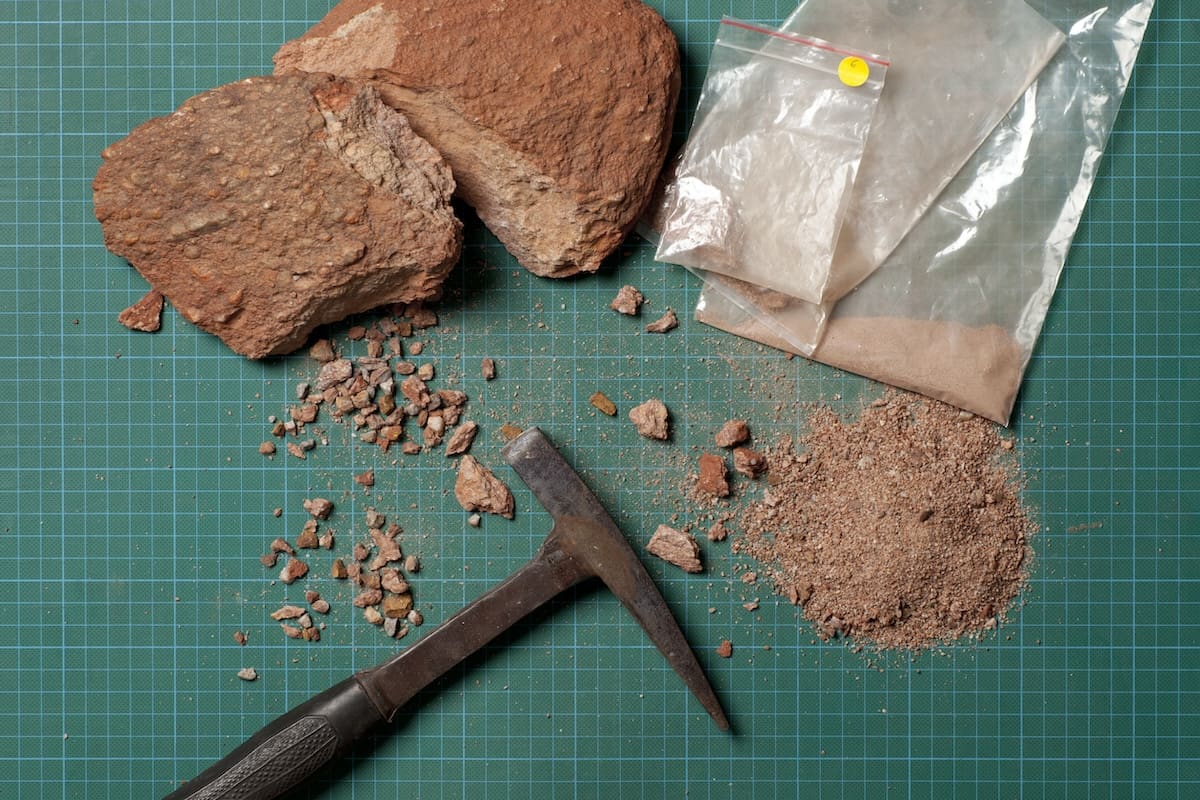
Mangan’s art is full of anecdotes from the end of the world. Stories that he has used to inspire his work include the CSIRO once speculating that termites could be trained to detect gold; the fact that the government of Nauru once owned the tallest skyscraper in Melbourne, which it built with wealth from phosphate mining that was slowly destroying the tiny island nation; or the time Bougainvillean resistance fighters survived a blockade by manufacturing coconut fuel for their vehicles. These historical anecdotes are sometimes grim, sometimes hopeful, but they all coalesce in Mangan’s own artistic language. Mangan’s vocabulary might be said to express “the socio-political context of energy extraction”, the “immanence of deep time”, or the “boundaries between human and non-human worlds”. These concepts are explored in the catalogue for A World Undone, adding insightful essays to the mountain of text that has already been written on Mangan’s work.
Writers love Mangan’s art because he is a storyteller, or, at least, he is adamant that his charged materials contain powerful stories that he can unlock. In interviews the artist suggests that physical gestures— cutting, mining, crushing, etc—can break into history. He works like a sculptor, only the result rarely ends up as “static sculptural objects”. But it is those sculptural gestures that “unearth the stories held within the material”. The MCA exhibition gives audiences an opportunity to see Mangan’s stories weave together in a dynamic crescendo. Whether they are in the form of sculptures, videos, or loose minerals, each work by Mangan contains a related narrative—a series of essential parables from the Anthropocene.
Nicholas Mangan: A World Undone
Museum of Contemporary Art
On now—30 June


